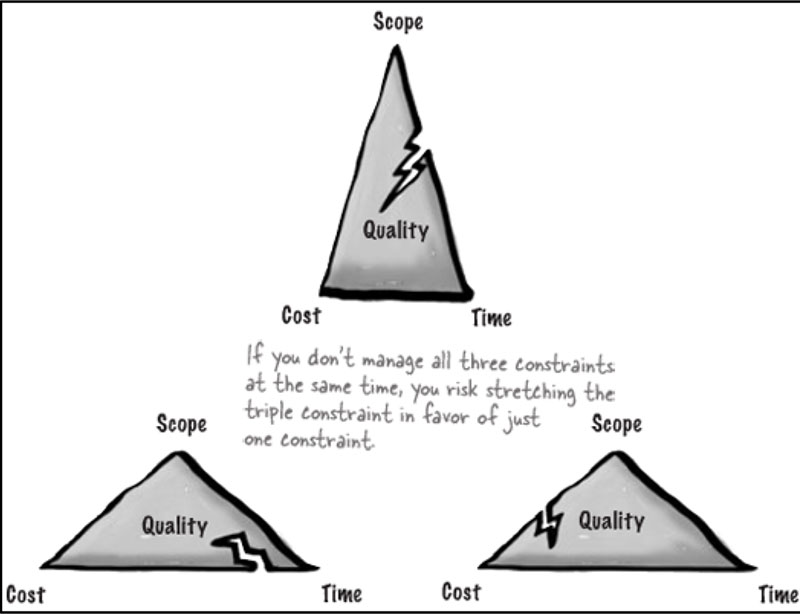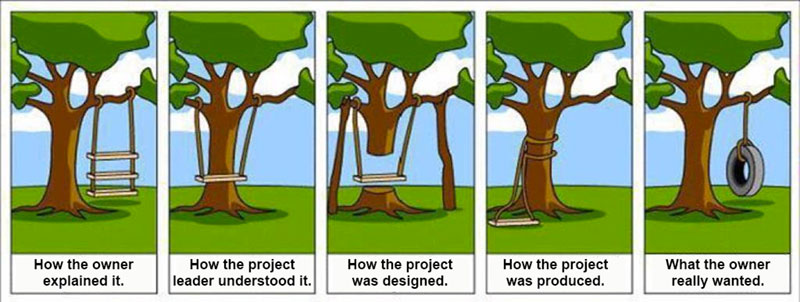This is the first in a series of articles about Project Management in a modern marketing environment. The series will define the discipline as well as cover why it is important and how it is employed via a stable program or campaign development process. Importantly, the series will give practical advice and samples that can be used in applying project management in any organization.
What is Project Management? And why is it important?
Let’s take a page out of the project management playbook and define terms. It’s a good idea to understand what is meant by a “project†before getting into what managing one means and why that is important.
A project is a temporary endeavor that has a defined timeline. It has a specific scope and it requires certain resources such as a budget and labor in order to be successful.
In its purest form, Project Management is the application of processes, methods, knowledge, skills and experience to achieve the project objectives.1 In other words, making sure that s**t gets done.
Typically, and arguably most effectively, this is done by a Project Manager (or several). But from a practical standpoint, if you spend time making sure work, especially the work of others, is completed effectively and efficiently, you are practicing project management.
Like many things, marketing has become increasingly complex. Among other things, the rambunctious, adolescent, digital channel, with its ever-expanding sub-channels (email, mobile, social, video, etc.) has seen to that. In addition, the pressure to do more for less – less time and money – has never been greater.
The many traditional marketing channels and new digital sub-channels have turned marketing, which has always been a collaborative endeavor, into a
robust team sport complete with its own, constantly evolving buzzwords and lingo.
This backdrop of heightened complexity, multiple stakeholders and pressure for marketing to perform is in many ways the primary driver for why deliberate, methodical project management has become an essential ingredient of successful marketing projects.
What are the most important aspects of a project that need managing?
 There are a lot of moving parts in a typical marketing project. Some of those parts are the creative assets, technical components, the data associated with results and, of course, the people working on the project. The most important moving parts from a Project Management standpoint are the project’s timeline, its cost and its scope (scope = the activities and deliverables of the project).
There are a lot of moving parts in a typical marketing project. Some of those parts are the creative assets, technical components, the data associated with results and, of course, the people working on the project. The most important moving parts from a Project Management standpoint are the project’s timeline, its cost and its scope (scope = the activities and deliverables of the project).
In the Project Management world, these are collectively known as the Triple Constraint. Each component individually, and their interaction collectively, will impact the project’s overall quality.
Poor planning or just unavoidable events can put pressure on any or all of these components. The result will be degraded quality as well as problems with the budget, timeline or being able to complete all the project’s deliverables in time for launch.
By far, the most rigid constraint – the one that gives Project Managers the most trouble is, time. Budgets can be increased to provide more resources or purchase assets – this one certainly has its detractors. Scope can be trimmed down so that there is less work to be completed. But there is nothing on this earth that can create more time.
What is the best way to stay out ahead of all of this complexity and successfully manage a project?
Here comes a bunch of platitudes and a great quote surrounding the same theme – be prepared.
- The single best predictor of completing a project successfully is starting the project that way
- If you fail to plan, you plan to fail
- An ounce of prevention is worth a pound of cure
- Project Management well executed is 90% fire prevention and 10% fire fighting.
In preparing for battle, I have always found that plans are useless, but planning is indispensable.
-Dwight D. Eisenhower
Coming up in this series on Project Management:
- A Standardized Process to Drive Successful Project Management
- Project Management: 5 Core Focus Areas + Tools & Technologies
- Developing a Project’s Strategic Foundation
- Real World Example: Email Campaign
1 association for project management
2Triple Constraint Illustration – Head First PMP, 1st ed., O’Reilly 2007


